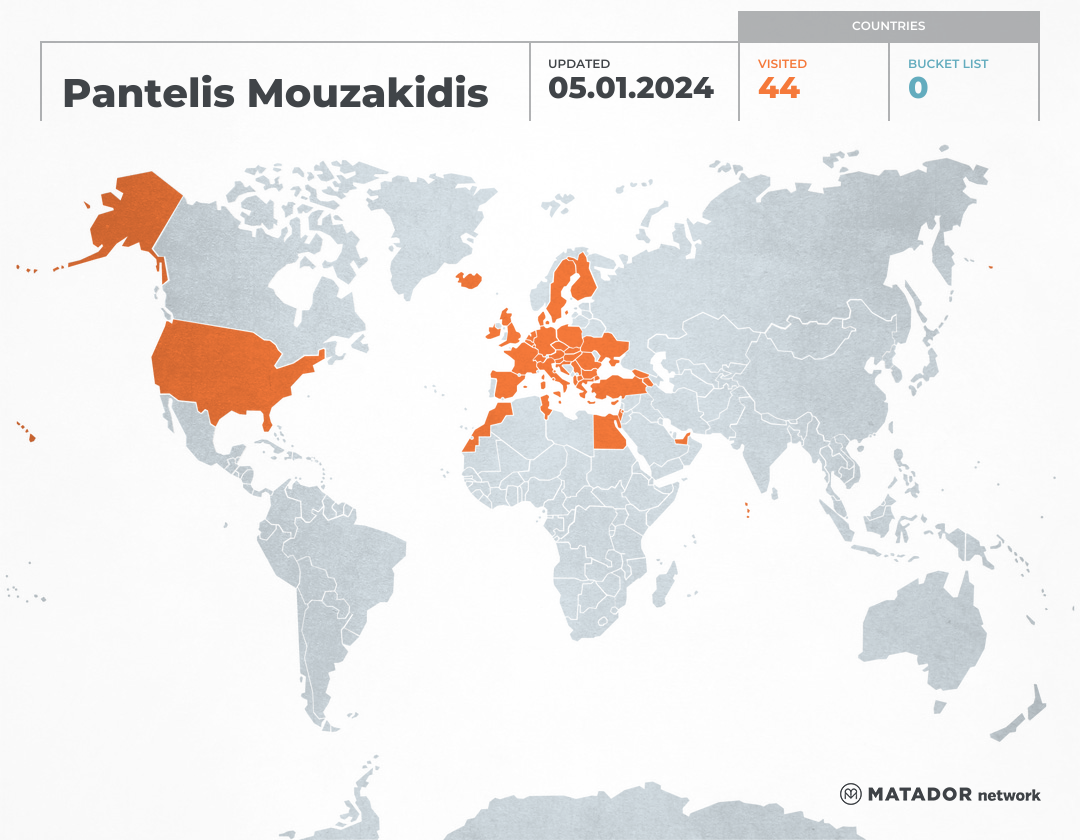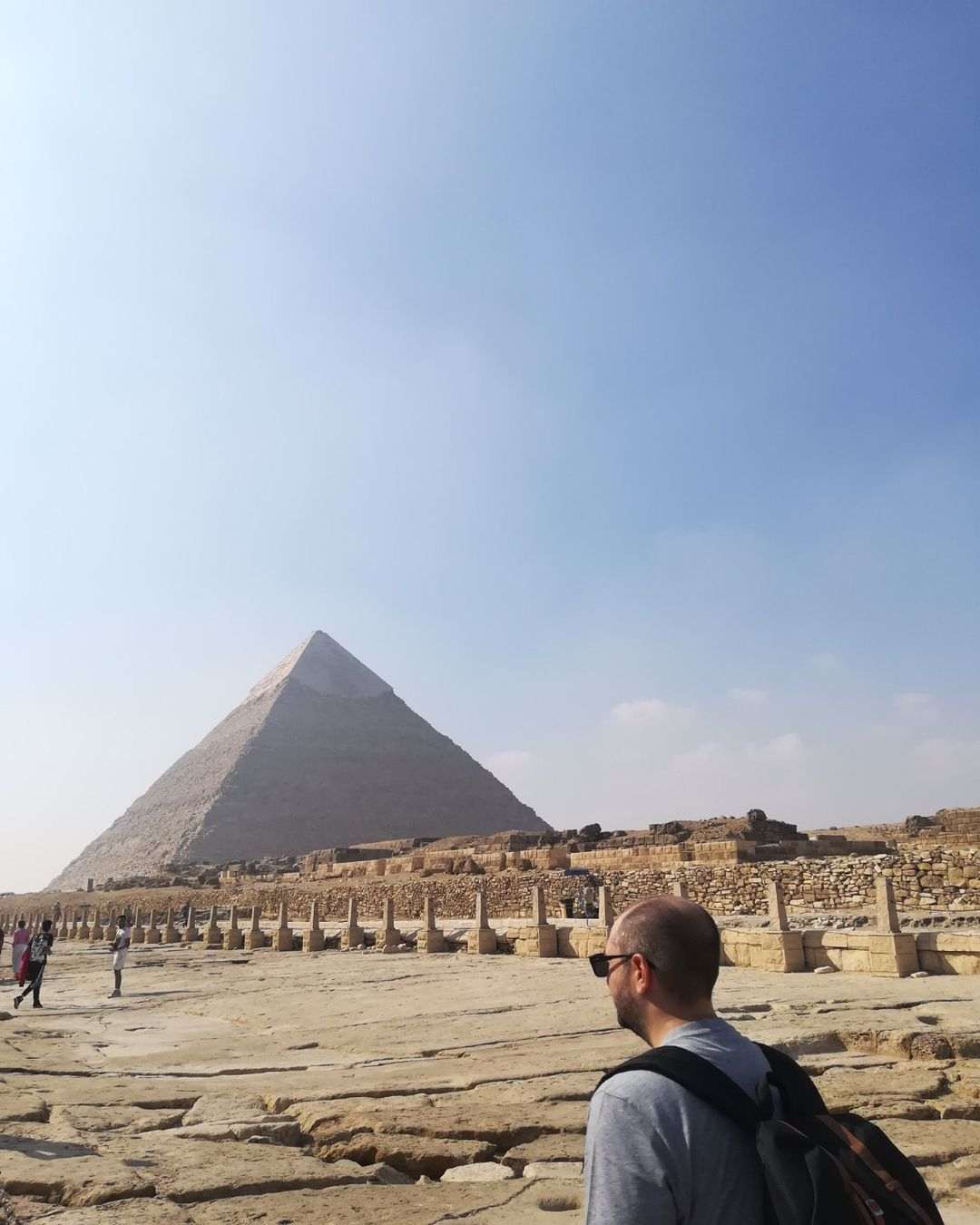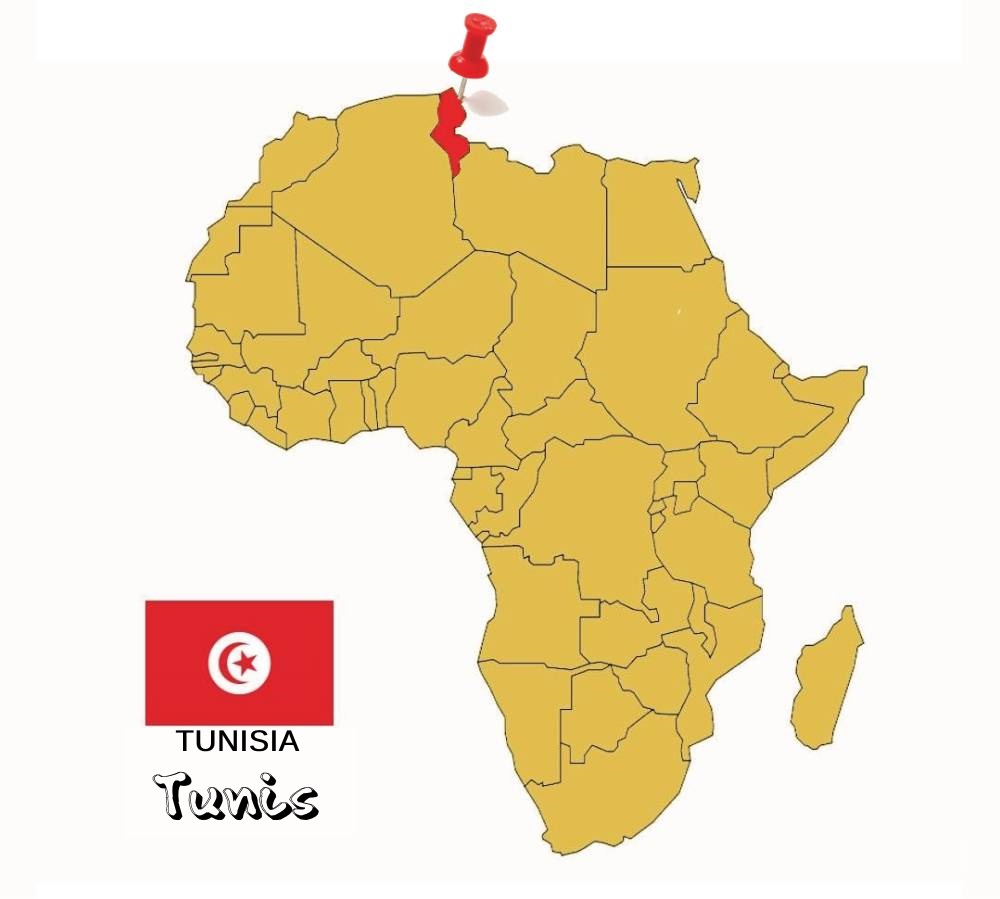
The Tunisian capital harmoniously combines elements of the Mediterranean and North Africa, thus creating a destination for all tastes! Picturesque alleys, historic bazaars, impressive mosques, colonial buildings, interesting museums and much more waiting to be discovered.
A few words about the city
Tunis is the capital of Tunisia and the largest city in the country. It is situated in the Mediterranean, built on a large bay, the Gulf of Tunis, and spreads out along its whole length, and also on the hills that start behind it. The history of Tunis begins in the second millennium BC, when it was first founded by the Libyans and later passed into the possession of Berbers, Numidians and Phoenicians. Over the centuries it changed many hands, until 146 BC, when the Roman Empire destroyed Tunis and Carthage completely. However, the city was reconstructed from its ashes under the authority of Augustus and developed into a significant city and center for the development of agricultural activities. From the 12th to the 16th century, the town passed under the rule of Berber dynasties and became one of the largest and wealthiest cities in the Islamic world! Then the French arrived to the city and were in power from 1881 to 1956 when the country became independent! Today it has about 730.000 inhabitants in the city, while it is estimated that in the wider area live about two million inhabitants! So I will try to present Tunis to you through my own eyes and share with you what I think someone who visits it for the first time should see.
Medina
Like any self-respecting Arab megalopolis, Tunis revolves around its old city. The Medina of Tunis dates from the 7th century AD and it is indisputably the most attractive and traditional part of the city, even belonging to the UNESCO world heritage sites. It has an abundance of breathtaking sights, vintage doors, street art, old houses, traditional cafes, mosques and a labyrinthine bazaar (suuq), where literally everything is sold! So start from Victory Square, where the gate of the old city, Bab el Bhar, which means sea gate, dominates. This arch was originally built in the 10th century AD during the reign of the Aghlabids and later rebuilt in 1860 AD, marking the division between the old-African city and the new-European one. From there you will be able to enter the bazaar of Tunis, which is one of the largest and most well-preserved in the entire Arab world! In the shops you can find everything from traditional items, clothes and carpets, to spices and electronic devices. Negotiation there is necessary, but don't overdo it, as the shop owner might think you're devaluing the product he's selling and take offense.
Al-Zaytuna Mosque
Inside the Medina of Tunis, we find perhaps the most recognizable sight of Tunis, the Al-Zaytuna Mosque. It is the largest Mosque in the city and the second oldest in the entire country. It dates from 698 AD and covers an area of 5000 square meters! It was built with columns from ancient Carthage and, in addition to being a place of worship, it also functions as a religious school and university. Unfortunately, only Muslims are allowed to enter, but there is a platform-like spot from which you can see some of the inner parts of the temple!
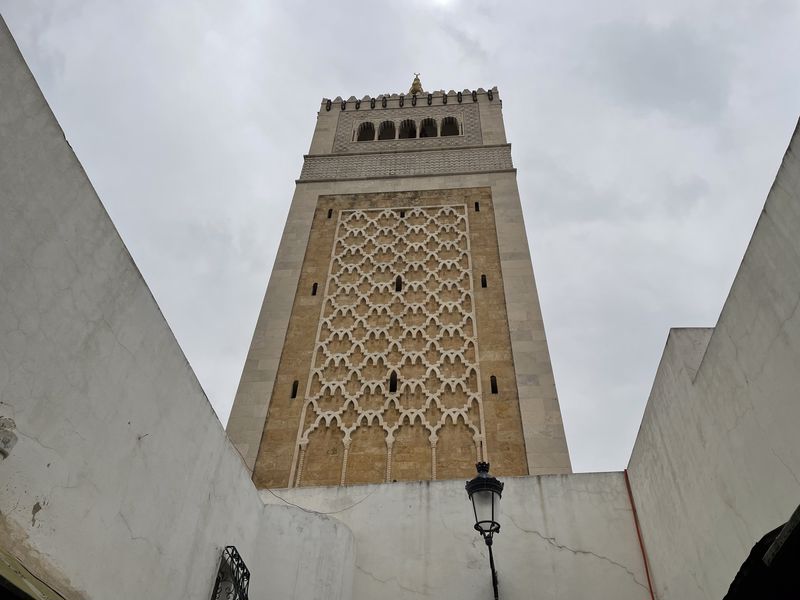
Cathedral of Saint Vincent de Paul
The Cathedral of Saint Vincent de Paul (Cathédrale Saint Vincent de Paul) is located practically just outside the Medina of Tunis, in the Indepedee Square (Place de l'Indépendence), opposite the French embassy, at the point where Avenue Habib Bourguiba meets Avenue de France. It is the first impressive building one encounters when leaving the city market and is dedicated to Saint Vincent de Paul who was born in 1581 and died in 1660 and is considered the patron of all charitable institutions of the Roman Catholic Church. The church began construction in 1893 and opened at Christmas 1897, although temporarily with wooden bell towers due to lack of funds. It has neo-Byzantine architectural elements as well as Moorish and Gothic Revival elements. After the coup the temple remains closed to the public and is used only for cultural events.
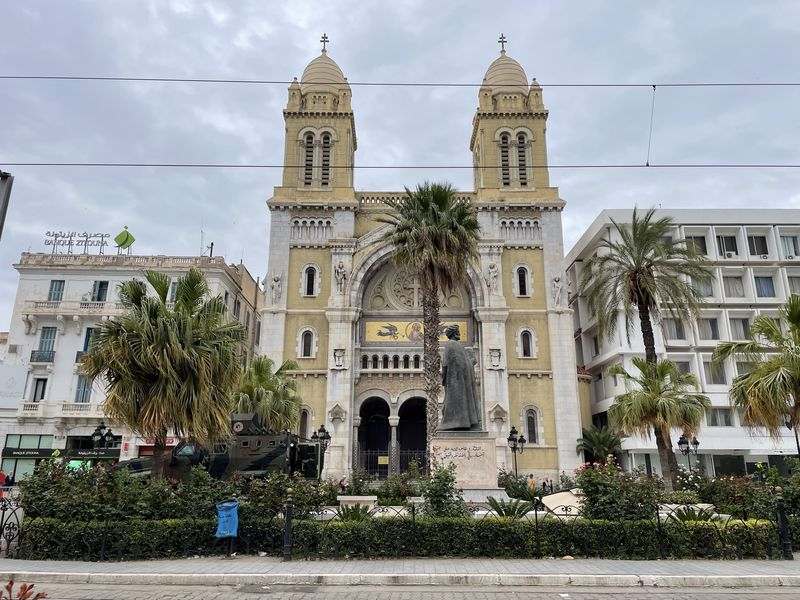
Habib Bourguiba Avenue Clock Tower
At the end of the Avenue of France, we find another impressive attraction that is worth visiting. I refer, of course, to the Clock Tower of Avenue Habib Bourguiba (Horloge De l'avenue Habib Bourguiba). It is essentially an imitation of the famous Clock Tower located in London, Big Ben, which is, of course, far from it in both beauty and imposingness. Built to commemorate Tunisia's independence on November 6, 1956, it is erected of wrought iron and surrounded by an impressive fountain. This place has become a popular meeting point for young Tunisians, especially after the recent revolution, but unfortunately it is somewhat abandoned, not remembering its original appearance!
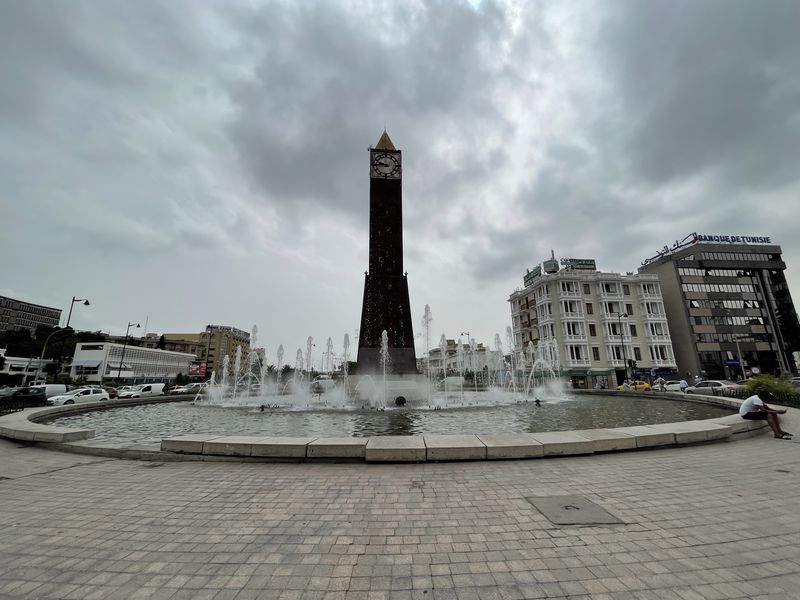
Kasbah Square
The Kasbah Square (Place de la Kasbah) is located opposite the famous El-Kasbahmuch Mosque and there you will discover some of the most impressive and new sights of the entire country. It is a vast open square, with cute black lanterns and lots of red Tunisian flags. At one end of it dominates the City Hall of Tunis (Hôtel de Ville). This particular building was inaugurated only in 1998 and was designed by Tunisian architects, who used the traditional motifs of Arabic architecture, adding European touches! Plus, in the center of the square, you will find the National Monument of the Kasbah (Monument Place de la Kasbah), which was designed and executed by the Tunisian sculptor Abdelfattah Boussetta in 1989 and is considered particularly important for the locals. In fact, this particular monument is also depicted on Tunisian identity cards!
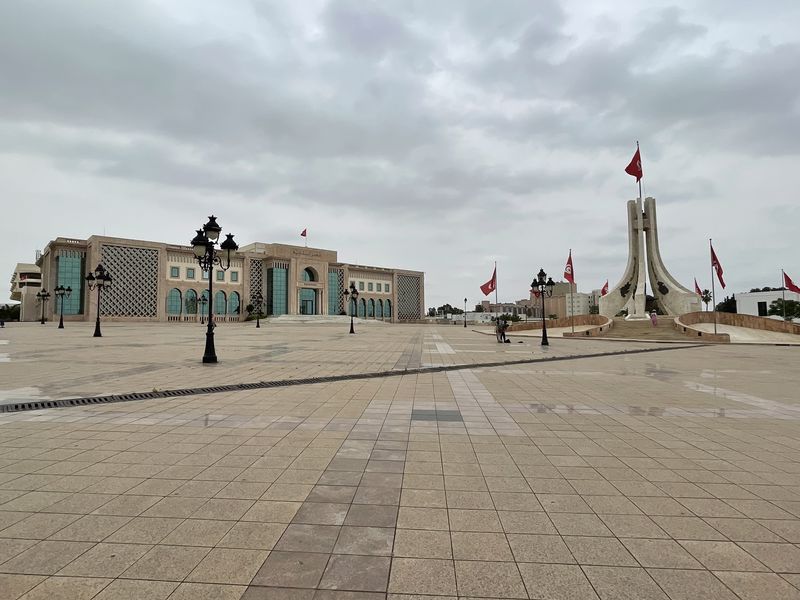
Bardo National Museum
The Bardo National Museum (Musee National du Bardo) is the oldest and most important museum in the country. It was opened about a century ago and is housed in a palace, which still retains its princely characteristics, thus giving the visitor the opportunity, in addition to the exhibits, to see the areas where the country's leaders lived. It houses an impressive collection of Roman mosaics, as well as ancient Greek, Roman and Islamic works of art, having been internationally recognized as the museum with the largest collection of mosaics in the world. Unfortunately, after the 2011 coup, this museum is closed, as it is located next to the Ministry of Interior, which is heavily guarded by the army! According to local media, however, it is expected to reopen in the near future!
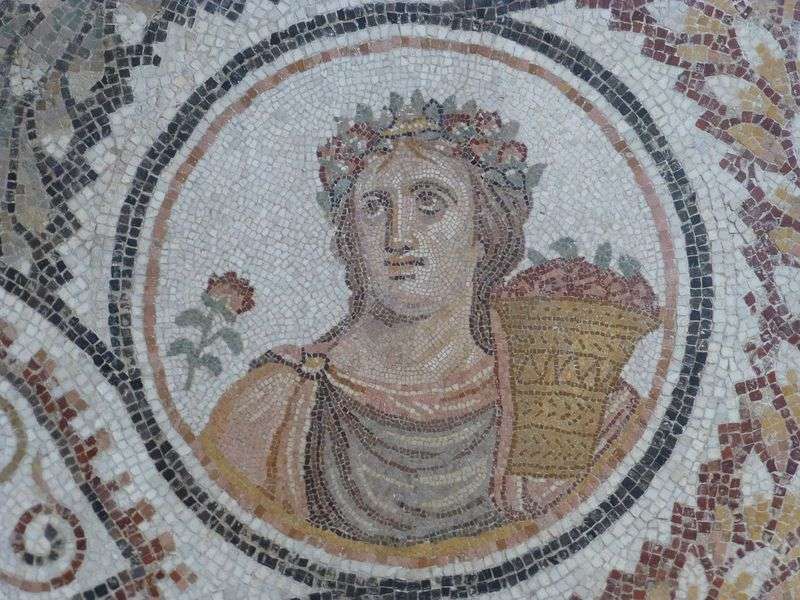
Carthage
In the northern part of the city, where the airport of Tunis is located, we find the historic Carthage. The once capital of the Punic empire, later occupied by Roman and Islamic rulers, was one of the most important cities in the Mediterranean! In fact, during the Hellenistic era, it is estimated that Carthage was the second largest city in the world (behind only neighboring Alexandria), but it was completely destroyed during the third Roman-Carthaginian war by the Romans. Today, you can admire the ruins of this city scattered by the sea! Start at the most important attraction that is, of course, the Baths of Anthonius (Bains d'antonin), continue with the amphitheatre (Amphithéâtre de Carthage) that can accommodate over 40,000 people, the Museum of Carthage (Musée de Carthage) and finish with the Roman theater (Amphithéâtre romain), the venue for the annual Carthage International Festival.
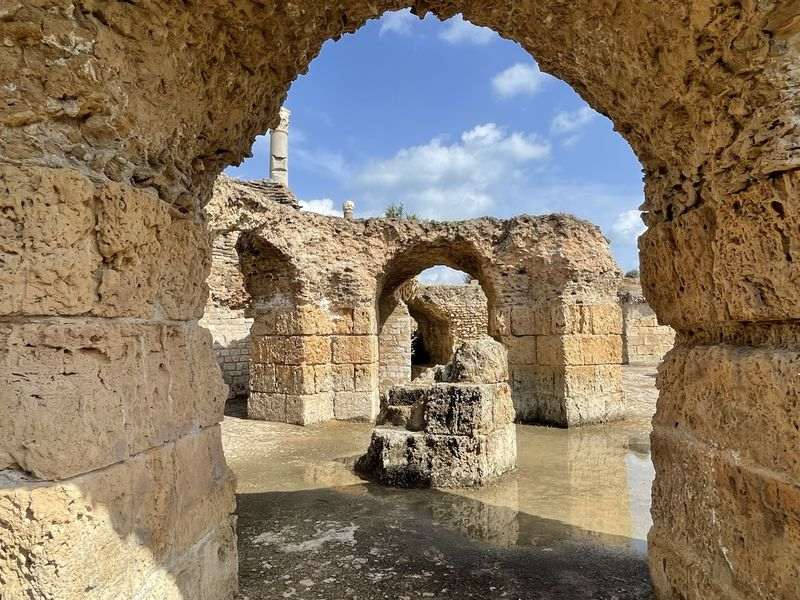
Sidi Bou Said
The most beautiful and most photographed part of the city, however, is essentially a suburb of Tunis, Sidi Bou Said. It is a picturesque village, founded on the edge of a steep hill, which stands out for its unique atmosphere and unique architecture. Walking there you will feel like you are on a Cycladic island, as white and blue dominate the buildings full of bougainvillea! So wander the alleys, sit down for tea and traditional sweets in the picturesque cafes and shop ceramic utensils from the local shops!
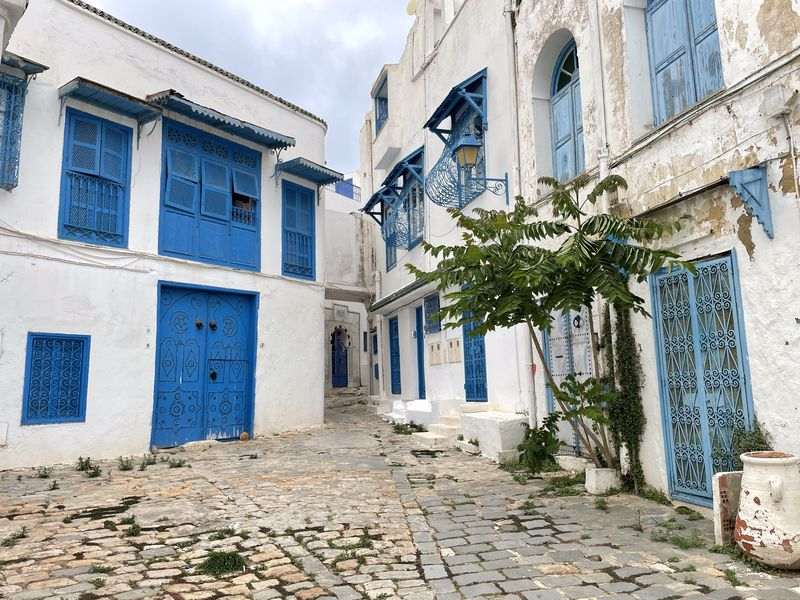
La Goulette-La Marsha
Last but not least, I left two more suburbs of Tunis that I am sure will excite you. The first is La Goulette, which in Arabic is called Halq al-Wadi ("neck of the river") and is the port of the city. It is located on a sandy beach between the lake and the Gulf of Tunis and is connected to the capital by a 7 km long canal. This place was a popular summer resort in the 19th century, known as "La Petite Sicile"! Although only ruins remain of those buildings, today La Goulette is trying to rise from its ashes and return to its former glories!
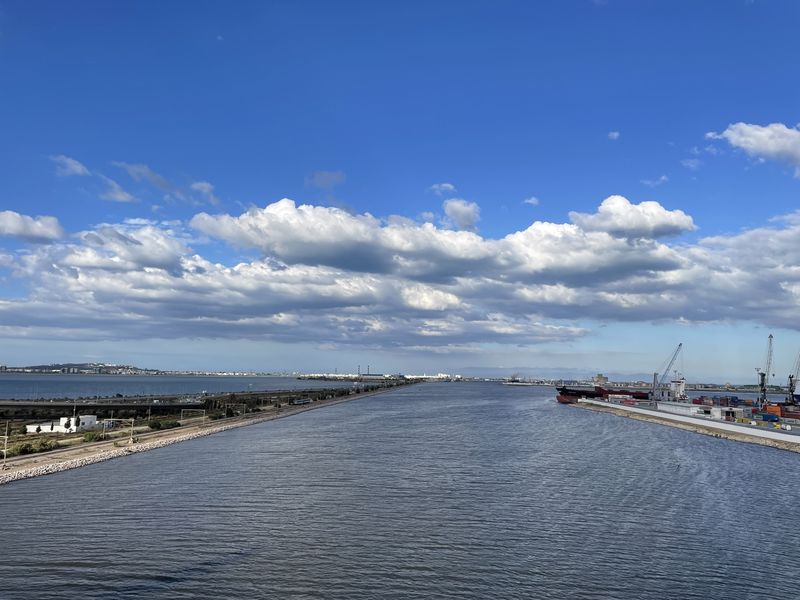
Finally, a stop at nearby in La Marsa is imperative. This is a place where you rarely come across tourists, as it is considered a hangout for locals only. So I suggest you take an ice cream in your hand, from the dozens of ice cream shops in the area and walk parallel to the sea and if the weather is good, even dive in this beautiful beach!
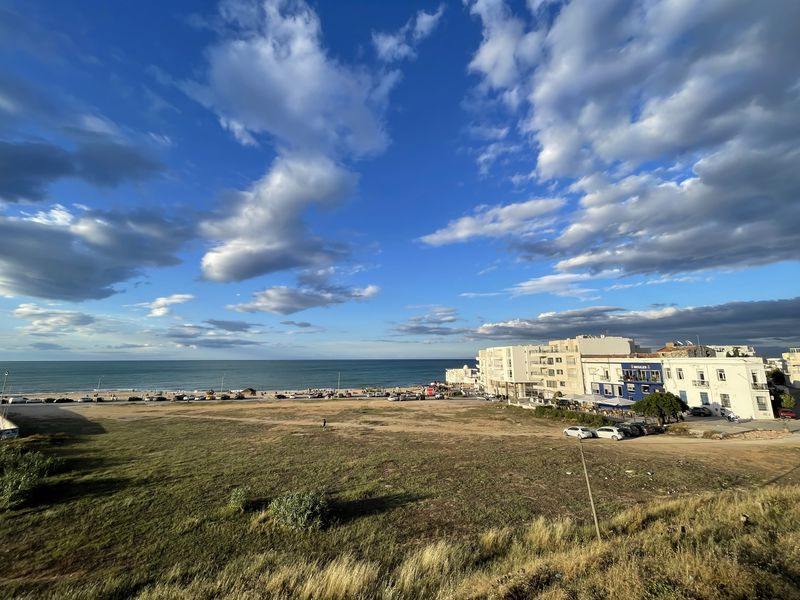
How to go
Currently, Thessaloniki is not directly connected by air to Tunis. However, there is a direct Aegean flight from Athens, where with proper planning you can find tickets starting from 93€ round trip!
Where to stay
Tunis is not a highly touristic city, so there are not too many hotels and those that do exist are more expensive than they are worth! My suggestion is to stay in the city center and more specifically at the Golf Royal Hotel. This is a charming three-star hotel, which has all the modern amenities that one might need on such a trip! The plus of this hotel is the fact that it is close to the Ministry of Interior, which implies a 24-hour guard by the army and the police!
How to move
Tunis has several modes of transportation for residents and tourists, since there are metro, buses and mini buses. The Metro, which is above ground, is the fastest way to get around the city and has three lines covering much of Tunis. Another way to get around the city is buses, since there are over 200 routes, spread across the length and breadth of the city, while mini buses run from city to city! Ultimately, taxis in Tunisia are cheap and everywhere! In addition to the classic yellow taxis that you can stop on the street, in Tunisia the Bolt app also works, from where you can easily and quickly call a taxi, wherever you are!
What to eat
Tunisian cuisine is a mixture of flavors representative of the country's past and its central location in North Africa. While the cuisine varies in different regions, Tunisian food typically combines French and African flavors with spicy touches. Based on the country's staple food, couscous, Tunisian dishes often include seafood, lamb, veal or fresh vegetables! As I said before, the most notable dish of the whole country is couscous, which comes from semolina and you will find it in every restaurant or tavern in this country. Other notable traditional dishes are Brik, which is essentially pie bread with various types of filling and a soft-boiled egg. Egg also has Ojja, which is considered a breakfast dish and is essentially an omelet along with hot sauce and pieces of lamb! It is also worth trying the mechouia salad, which contains egg, tuna, aubergines, peppers and olives, the Tunisian tabouneh bread, which took its name from the oven in which it is baked and the hot Harissa sauce, which contains hot chili peppers and garlic! From sweets now do not forget to taste the traditional syrupy Makrouth and Tunisian donuts bambalouni. Finally, of course, mint tea, usually served with almonds or pine nuts, and red wine, for which the country is famous! To taste traditional flavors without fear I recommend Dar El Jeld Restaurant, El Ali and Dar Belhadj in Tunis, as well as Au Bon Vieux Temps and Le Chargui in Sidi Bou Said! For coffee with a view in Tunis the Café Panorama and in Sidi Bou Said the Café Des Delices and Café des Nattes.
Useful information

In Tunis we travel with a Passport valid for at least 6 months. You do not need a Visa to enter the country, while you must fill in the immigration form, so that it will be considered during passport control.
In Tunis the language used is, of course, Arabic and more specifically a Tunisian dialect, while everyone also knows French. As for English, most of them don't know a single word, but everyone is willing to help if they know.
The country's currency is the Tunisian Dinar (TND) and its current exchange rate is €1 = 3.23 dinars. Many small shops in the bazaars accept dollars and euros.
I suggest you transfer your money to banks in the city where they keep the lowest commission and not exchange offices!
Tunis is two hours behind Greece (GMT 0).
For your journey to and from Tunis airport, I suggest you choose a taxi, as the distance is short and the cost minimal!
The Greek Embassy in Tunis is located at 6 rue Saint Fulgence, Notre Dame and its telephone numbers are +21671 288411, 287240.
The best time to go to Tunis is either autumn or spring when the temperatures are at normal levels.
Recommended excursions → Kairouan, El Jem, Sousse, Monastir, Sfax

If this article seemed interesting or contributed to your quality information, then you can like my facebook page: o_thessalonikios or follow me on instagram!





